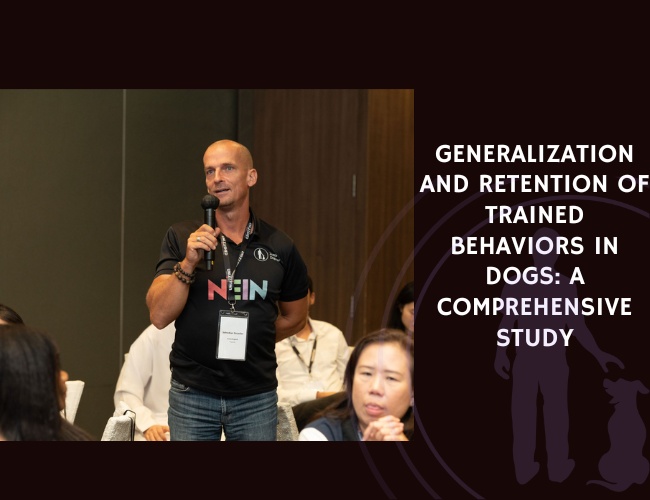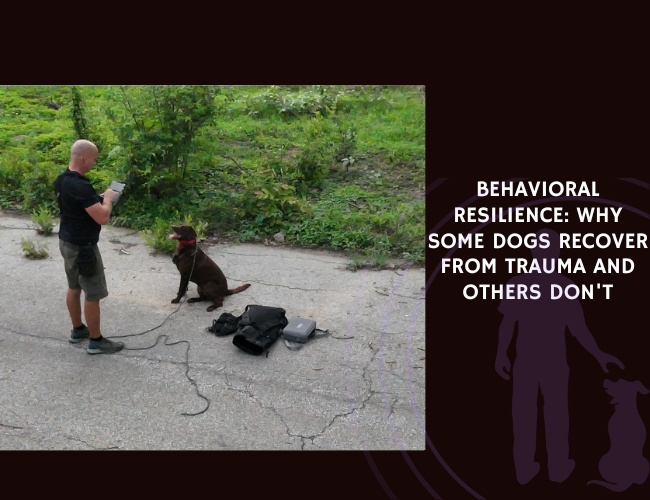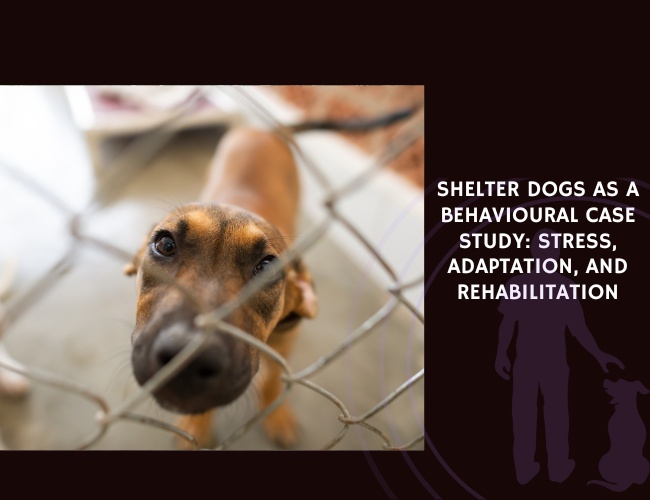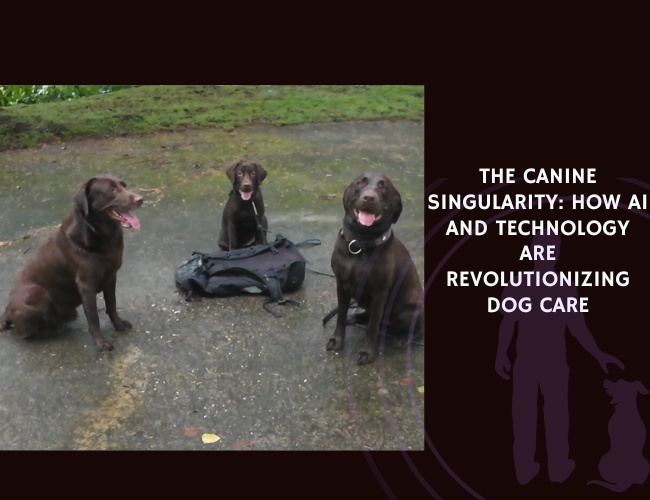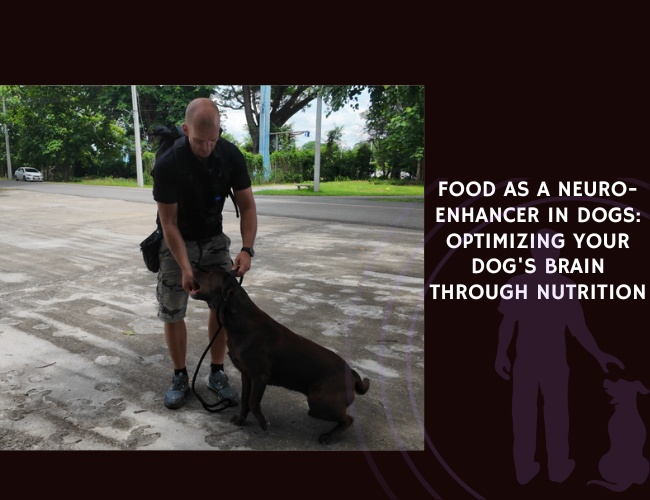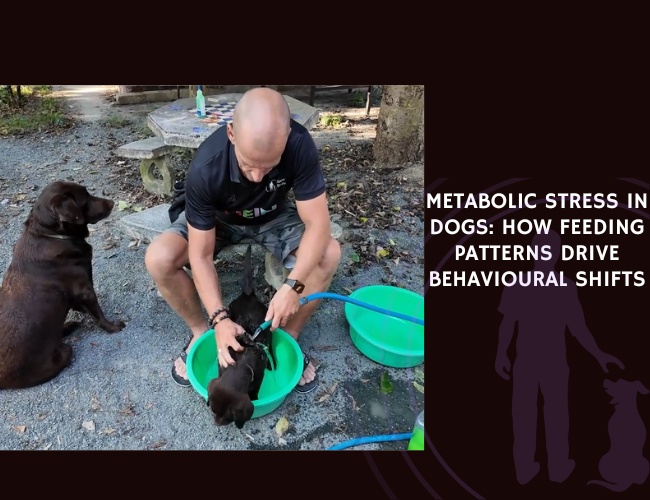Introduction to Canine Behavior Generalization and Retention
Definition of Generalization and Retention in Dog Training
Let’s dive into the world of dog training, starting with two crucial concepts: generalization and retention. Generalization refers to a dog’s ability to apply a learned behavior across various situations that are different from where it was originally taught. This might mean performing a command reliably in new environments, around different people, or in the presence of various distractions. For example, if your dog can “sit” at home, they should ideally understand and perform the same command at the park, even amidst the hubbub of children and other dogs.
Retention, on the other hand, involves a dog’s capacity to remember and maintain learned behaviors over time. It goes beyond short-term learning, focusing on how well and how long a dog can keep up with the training they’ve received. For instance, a dog that has been taught to “stay” should be able to perform this command consistently even if there has been some time since its last training session.
Importance of These Concepts for Real-World Obedience and Reliability
Understanding and implementing generalization and retention are vital for achieving real-world obedience and reliability in dogs. Imagine taking your dog to the vet: you want your dog to follow instructions in this stressful and unfamiliar environment just as they would at home. This is where generalization plays a key role. A dog that struggles with generalization might be well-behaved at home but may fail to comply with commands in a public setting, leading to potential safety issues and increased stress.
Retention is equally important. To ensure commands remain effective over time, solid retention skills are necessary. When a dog retains behaviors well, reinforcement can be less frequent without compromising their performance. This means commands like “stay” or “come” will be reliably followed, contributing to their safety and your peace of mind.
Overview of the Study’s Focus on Cognitive Mechanisms and Training Methodologies
This study primarily focuses on understanding the cognitive mechanisms that underlie generalization and retention in dogs. By examining these processes, we aim to identify effective training methodologies that enhance both of these abilities. Key areas explored include the impact of environmental changes, handler variations, and the presence of distractions on a dog’s performance. Additionally, the study dives into the science behind dogs’ memory systems, investigating factors that influence memory formation and storage, such as reinforcement history and emotional state.
Effective training methods are also scrutinized, comparing positive reinforcement with aversive practices and evaluating different reinforcement schedules. Understanding cognitive flexibility in canine learning is crucial, as it highlights how dogs can transfer learning beyond simple stimulus-response patterns. The assessment strategies for behavior generalization and practical applications in various settings round out the study, providing comprehensive insights into how to optimize dog training for better performance, reliability, and safety in real-world situations.
This chapter lays the foundation for a thorough exploration of how dogs learn, generalize, and retain trained behaviors, setting the stage for deeper insights into effective training techniques and applications.
Understanding Generalization in Dogs
Explanation of How Dogs Transfer Learned Behaviors to New Situations
When training dogs, one of the key aims is ensuring that the behaviors they learn in one context can be transferred to various new situations. This process, known as generalization, is vital for real-world obedience and reliability. Generalization means that a dog can perform a learned behavior not only in the environment where the training took place but also in different settings with various distractions and changes in the handler.
Barriers to Generalization
Environmental Changes
Environmental changes play a significant role in the generalization process. A dog trained indoors may have trouble performing the same behavior outdoors due to the different sensory inputs such as smells, sounds, and sights. These variations can create confusion for the dog, leading to inconsistent behavior performance. Dogs often rely on specific environmental cues during training, and when those cues are absent in new settings, it can hinder their ability to generalize learned behaviors.
Handler Variations
Another significant barrier to generalization is the variation in handlers. Dogs often respond differently to various handlers due to differences in cues, body language, and reinforcement styles. For example, a dog trained to sit by one person might not immediately understand the same command from another person who uses a different tone of voice or physical gestures.
Impact of Distractions and Stressors on Behavior Performance
Distractions
Distractions such as other animals, people, or environmental stimuli can significantly disrupt a dog’s ability to focus on the trained behavior. Distractions create competing stimuli that can be more engaging or threatening than the command given by the handler. For instance, a dog asked to stay might break position if a squirrel runs by, demonstrating a lapse in the generalization of learned behavior due to a distraction.
Stressors
Stressful situations can also impair a dog’s performance of learned behaviors. Stress can be caused by loud noises, unfamiliar environments, or emotional upheaval. When a dog is stressed, its ability to focus and perform tasks reliably is diminished. Stress affects the dog’s cognitive processes, leading to reduced accuracy and consistency in behavior performance.
Overall, understanding these barriers and impacts helps trainers design better programs that account for variability in environment and handler, and recognize how distractions and stress affect canine behavior generalization. By doing so, trainers can work towards achieving reliable and consistent obedience across various real-world situations.
This awareness and strategic approach will ultimately enhance the capability of dogs to transfer and retain learned behaviors, benefiting their performance in work, service, therapy, and everyday life.
Implementing diverse and consistent training practices will pave the way for more effective generalization and retention, setting the stage for deeper exploration into canine cognitive flexibility and learning in the next sections.

The Science of Memory and Retention in Dogs
Understanding memory and retention is crucial in canine training. This knowledge helps trainers design effective training plans that ensure dogs not only learn new behaviors but also retain and perform them reliably over time.
Short-term vs. Long-term Memory Systems in Canines
Dogs, like many other mammals, have both short-term and long-term memory systems. Short-term memory helps dogs recall information for immediate use, while long-term memory involves the consolidation and storage of information over extended periods. Short-term memory is temporary and limited in capacity, essential for day-to-day interactions, but not reliable for maintaining learned behaviors without additional consolidation. Long-term memory, however, allows dogs to retain complex sequences and commands for months or even years.
Factors Influencing Memory Formation and Storage
Several factors play significant roles in how well dogs form and store memories:
- Reinforcement History: Consistent positive reinforcement strengthens memory traces, leading to better retention. Even intermittent reinforcement can be effective, though managing it properly is key.
- Repetition and Consistency: Repeated practice and consistent training protocols enhance memory consolidation, helping ingrained behaviors.
- Emotional State: Dogs learn and memorize better in a positive, stress-free environment. Negative experiences can impair learning and memory, hampering a dog’s performance.
- Distractions and Stressors: Environmental stimuli like other animals, noises, or sudden changes can disrupt a dog’s focus. Stressful situations can lead to poorer memory performance.
How Time Intervals Between Training Sessions Affect Retention
The timing and spacing of training sessions significantly impact how well dogs retain learned behaviors. Regular, evenly spaced training sessions are vital for maintaining long-term retention. Here are some insights:
- Frequent Short Sessions: Short, frequent training sessions are more effective than long, infrequent ones. Dogs retain information better and stay motivated with brief, regular practice.
- Scheduled Breaks: Incorporating breaks between sessions allows information to be processed and embedded into long-term memory.
- Consistency: Consistent routines help dogs form stable memory traces, ensuring that learned behaviors remain reliable over time.
These insights are vital in shaping training protocols that enhance behavior retention in dogs. Ensuring a cognitively engaging and emotionally supportive environment, along with consistent and repetitive training, helps form enduring memories. This careful structuring not only optimizes retention but also fosters better overall learning.
As we dive deeper into canine training methodologies, the next topic will explore how different training techniques impact this retention and overall obedience reliability.
Effective Training Methodologies
Training a dog effectively hinges on choosing the right methods and understanding the intricacies of canine memory and learning. In this chapter, we’ll explore positive reinforcement versus aversive methods, the benefits of variable reinforcement schedules, and the importance of contextual variety and proofing techniques.
Positive Reinforcement vs. Aversive Methods
Positive reinforcement involves rewarding desired behaviors to encourage their recurrence. Rewards can be treats, praise, or playtime. This method fosters a positive learning environment and strengthens the bond between the dog and the trainer. Research shows that positive reinforcement generally leads to better behavior generalization and retention because it creates a strong association between the behavior and the reward [Generalization and Retention of Tra.txt].
On the other hand, aversive methods rely on punishment to discourage unwanted behaviors. This can involve physical corrections or imposing unpleasant stimuli. Although it might yield immediate compliance, aversive training often induces fear and anxiety in dogs, potentially leading to hostile behavior and impaired learning. Dogs trained with aversive methods may struggle to generalize learned behaviors to new contexts due to the negative emotions linked to the training experience.
Benefits of Variable Reinforcement Schedules
Reinforcement is crucial to solidifying learned behaviors, but even positive reinforcement can be optimized. Variable reinforcement schedules, where rewards are given unpredictably, have been shown to be more effective in maintaining behavior over the long term. This is because variable schedules make behaviors more resistant to extinction than fixed ones. When a dog receives rewards intermittently, it learns to expect the behavior to be rewarded without predicting exactly when, leading to improved retention and adaptability [Generalization and Retention of Tra.txt].
Importance of Contextual Variety and Proofing Techniques
Contextual variety is about exposing dogs to diverse training environments with different handlers and varied cues. This practice enhances generalization, enabling dogs to perform learned behaviors in a wider range of situations. For example, a dog trained only at home may struggle to follow commands in a park filled with distractions. Training in various environments helps dogs adapt and respond reliably regardless of the surrounding conditions.
Proofing is a technique that involves gradually introducing distractions during training sessions. By challenging the dog with different levels of difficulties, proofing ensures that the dog can maintain its behavior under real-world conditions. This method is vital for service, therapy, and working dogs, who must perform reliably in often unpredictable and distracting environments.
To summarize, integrating positive reinforcement with variable reinforcement schedules and ensuring contextual variety and proofing can significantly enhance the generalization and retention of trained behaviors in dogs. Embracing these methodologies helps in developing well-rounded, adaptable, and happy dogs.
Cognitive Flexibility in Canine Learning
Understanding the cognitive flexibility of dogs provides vital insights into their learning abilities, problem-solving skills, and how they adapt to new situations. This chapter explores concept learning, the transfer of learning beyond simple stimulus-response patterns, and the breed and individual differences that make canine learning so fascinating.
Concept Learning and Problem-Solving Abilities
Dogs exhibit impressive cognitive abilities, extending beyond the basic stimulus-response learning. Concept learning involves grasping general ideas that can be applied to various scenarios, rather than just associating a specific cue with a particular behavior. For instance, some dogs can learn to differentiate between objects based on size, shape, or color, demonstrating an ability to understand abstract concepts.
Moreover, dogs often show problem-solving skills in novel situations. This means that when faced with a new challenge, they can adapt their behavior to achieve a desired outcome. For example, a dog trained to open a simple latch may be able to figure out a slightly different mechanism by applying the same principles it learned previously. This adaptability signifies a degree of cognitive flexibility that goes beyond mere rote learning.
Transfer of Learning
Learning transfer is a crucial aspect of canine cognition. It refers to the ability of dogs to apply what they’ve learned in one context to different, often unanticipated, settings. This involves more complex cognitive processes than simply responding to a trained cue.
An example of this could be a dog that has been trained to sit when asked to do so by its owner indoors. If the dog also sits on command when asked by a friend at a park, it has transferred its learning. This transfer is essential for behaviors to be reliable across various environments and handlers, making the training much more practical and effective in real-world scenarios.

Breed and Individual Differences
It’s important to note that cognitive flexibility and learning abilities can vary significantly across different breeds and individual dogs. Some breeds are naturally more inclined towards problem-solving and concept learning. For instance, Border Collies and Poodles are often highlighted for their keen intelligence and ability to grasp complex tasks quickly.
Individual differences play a significant role as well. Just like humans, dogs have unique personalities and cognitive strengths. A particular dog’s past experiences, temperament, and even its age can influence how well it learns and applies new information. A younger dog might be more adept at picking up new commands quickly, while an older dog might show signs of cognitive decline, affecting its ability to retain and generalize new behaviors.
The complexity of canine cognition emphasizes the need for personalized training approaches that consider these differences. Recognizing and understanding each dog’s unique cognitive landscape ensures more effective training strategies, fostering a deeper and more cooperative relationship between dogs and their handlers.
By appreciating the nuances of cognitive flexibility in dogs, we can develop better training methodologies that not only teach new behaviors but also enhance the dog’s ability to apply these behaviors in various real-life situations. This approach ultimately leads to well-rounded, adaptable pets that perform reliably in diverse environments.
Assessment Strategies for Behavior Generalization
Experimental Approaches
To evaluate how well a dog can generalize a trained behavior, researchers employ various experimental approaches. One valuable method is the contextual shift test. This involves training a behavior in one environment and then testing the dog’s ability to perform the same behavior in a different setting. For instance, a dog that learns to sit on command in a quiet living room might be tested for the same behavior in a busy park. This test helps determine the extent to which the behavior has been generalized beyond the initial training environment.
Another useful experimental approach is the delayed recall test. This method assesses a dog’s retention by measuring its ability to perform a previously learned behavior after a period of no practice. For example, after teaching a dog to lie down on command, the trainer might wait a week before asking the dog to repeat the behavior. The dog’s performance can provide insights into the durability of the learned behavior and the strength of its retention.
Cue, Location, and Handler Variations
Behavioral generalization can be significantly influenced by variations in cues, training locations, and the handlers involved. Systematically altering these factors helps assess a dog’s adaptability and generalization capabilities.
Cue Variations
Dogs often rely heavily on specific cues from their handlers. By intentionally changing or varying these cues during training and testing, trainers can evaluate a dog’s ability to generalize the behavior. For instance, if a dog is trained to respond to verbal cues, testing its reaction to visual cues can provide insights into its flexibility and understanding of the command.
Location Variations
Different environments present various challenges. Training a dog in multiple locations—such as indoors, outdoors, in noisy areas, and in quiet surroundings—prepares it for a wide range of situations. This approach helps ensure that the learned behavior is not environment-specific but can be performed reliably regardless of changes in location.
Handler Variations
Dogs often develop strong associations with their handlers, which can impact their behavior generalization. To measure a dog’s adaptability, different handlers can issue the same commands during training. Observing how the dog responds to different individuals helps identify its ability to generalize learned behaviors across various handlers.
Reinforcement Sensitivity Assessment Techniques
Understanding a dog’s reinforcement sensitivity is crucial for predicting its retention of learned behaviors. Reinforcement sensitivity tests gauge how different reinforcement schedules affect a dog’s likelihood to retain and perform a behavior. Positive reinforcement, where desired behaviors are rewarded, typically leads to better retention and generalization compared to aversive methods, which rely on punishment.
Variable Reinforcement Schedules
Variable reinforcement schedules are particularly effective for behavior retention. These schedules involve delivering rewards unpredictably, which makes the learned behavior more resistant to forgetting and increases the likelihood of its application in different scenarios. By assessing a dog’s reaction to various reinforcement patterns, trainers can tailor their approach to enhance behavior generalization and retention.
Transition
Understanding these assessment strategies equips trainers and owners with the tools to evaluate and enhance a dog’s behavior generalization effectively. Using a combination of contextual shifts, variations in cues, locations, and handlers, alongside reinforcement sensitivity assessments, allows for a comprehensive review of a dog’s learning capabilities.

Practical Applications in Various Settings
Importance for Service, Therapy, and Working Dogs
Generalization and retention of trained behaviors are critical for service, therapy, and working dogs. These dogs must perform reliably in diverse, often unpredictable environments. Imagine a service dog must tug open a door or provide assistance regardless of the setting. Generalized training ensures these behaviors are not limited to familiar places but can occur seamlessly in various contexts.
Therapy dogs, often found in healthcare facilities, need to remain calm and exhibit specific behaviors despite changing patient populations and settings. Similarly, working dogs like police K9 units or search and rescue dogs face fluctuating and high-stress environments. Their ability to generalize trained behaviors to new situations ensures they can perform vital tasks effectively and safely.
Applications in Household Training and Public Behavior Management
Generalization is just as vital for household training. Teaching a dog to wait at the curb outside your home is important, but ensuring they exhibit the same behavior in different neighborhoods and busy public areas is crucial for safety. This generalized training helps integrate well-behaved pet interactions into everyday life, whether it’s during a stroll in the park or a visit to a pet-friendly cafe.
Household training benefits significantly from dogs’ ability to transfer learned behaviors across various family members and household settings. A dog trained to avoid jumping on furniture should ideally respect this boundary in any room of the house, not just where the training initially occurred.
How Generalization Improves Safety and Social Interactions
A dog’s capacity to generalize behaviors significantly enhances safety. For instance, emergency recall—the behavior of returning to the handler immediately when called—is a life-saving command that needs to work in any environment, whether the dog is at the beach, in a bustling city street, or at a rural park.
Social interactions also improve as dogs that generalize their training are less likely to show fear, aggression, or anxiety in novel situations. They can meet new people and animals calmly and confidently, thanks to consistent and varied training. This adaptability makes them more pleasant companions and reduces the likelihood of stress-induced behavioral issues.
By understanding and applying generalization principles, trainers and owners can ensure their dogs remain well-behaved in any setting, enhancing both the dog’s and the owner’s experience in public and private life. This foundation of consistent behavior across contexts leads naturally to exploring more advanced topics in canine cognition and training methodologies.
Challenges to Generalization and Retention
Training a dog involves not only teaching specific behaviors but also ensuring that these learned behaviors are retained and generalized to new situations. Let’s delve into some challenges that trainers face in achieving these goals.
Over-Reliance on Environmental Cues
One significant hurdle in generalization is dogs’ tendency to depend heavily on specific environmental cues during training. For instance, a dog might learn to sit when it sees a particular marker or is in a familiar training area. However, when these cues are absent, the dog might struggle to perform the same behavior. This dependency can limit a dog’s ability to adapt and respond appropriately in varied settings, which is crucial for real-world obedience.
Insufficient Contextual Variation
Another roadblock is the lack of contextual variety during training sessions. Training a dog in the same environment repeatedly can restrict the dog’s ability to generalize the learned behavior. Dogs, like humans, learn best through exposure to diverse scenarios. If a dog only practices commands at home, it might not follow them at the park. Introducing different locations, handlers, and scenarios during training can significantly enhance a dog’s adaptability and reliability.
Practical Tips for Overcoming Contextual Variation
- Start with familiar settings and gradually introduce new environments.
- Use different handlers to practice commands.
- Introduce various distractions during training, such as different sounds and movements.
Impact of Emotional Disruption
Emotional state plays a massive role in a dog’s learning and memory. Stress, fear, or frustration can severely hinder a dog’s ability to retain and generalize learned behaviors. For example, a dog that feels scared in a noisy environment may not perform a command it knows well in a calm setting. Creating a positive and stress-free training atmosphere is crucial for effective learning and memory retention.
Age-Related Cognitive Decline
Just like humans, dogs can experience age-related cognitive decline, which impacts their ability to learn and retain new information. Older dogs might take longer to learn new behaviors and could have difficulties remembering commands they once knew well. Patience and consistent, gentle reinforcement are key when training senior dogs. Adjusting training techniques to accommodate an older dog’s slower learning pace can lead to better retention and less frustration for both the dog and the trainer.
Strategies for Supporting Aging Dogs
- Use positive reinforcement consistently.
- Keep training sessions short and frequent.
- Provide mental stimulation through puzzles and interactive toys.
Training dogs is an ongoing process that requires an understanding of the obstacles to generalization and retention. By addressing over-reliance on environmental cues, ensuring contextual variety, managing emotional states, and accommodating age-related cognitive changes, trainers can enhance a dog’s ability to adapt and perform consistently across various situations.
Guidelines for Trainers and Owners
Best Practices for Frequent Reinforcement Techniques
Frequent reinforcement is crucial in maintaining and strengthening a dog’s learned behaviors. Positive reinforcement, such as treats, praise, or play, can be employed consistently to build a strong foundation. Here are some tips for effective reinforcement:
- Immediate Rewards: Reward your dog immediately after the desired behavior. This helps them associate the behavior with the reward.
- Consistent Reinforcement: Regularly reinforce the desired behavior to keep the memory fresh and encourage habitual performance.
- Mix of Rewards: Use a variety of rewards to keep the training engaging and unpredictable. This can include food treats, toys, or verbal praise.
Strategies for Cross-Context Practice and Environmental Variation
To enhance generalization, it’s essential to practice behaviors in various contexts. Here are methods to achieve this:
- Different Locations: Train in multiple environments, such as parks, streets, and indoor spaces. This helps your dog apply the behaviors across different settings.
- Various Handlers: Having multiple people reinforce the same behaviors ensures your dog understands that commands are not person-specific.
- Diverse Stimuli: Expose your dog to different sounds, smells, and sights during training. This prepares them to perform reliably despite distractions.
Methods for Reducing Dependency on Specific Environmental Cues
Training a dog to perform behaviors without relying on specific environmental cues is crucial for real-world application. Here’s how:
- Gradual Reduction: Slowly decrease the prominence of environmental cues. Start by fading out visual signals and eventually, verbal or physical prompts.
- Introduce Novel Cues: Introduce new cues and reinforce the behavior. This can help your dog understand that the command is not tied to a specific signal or context.
- Contextual Proofing: Implement proofing techniques by adding distractions and varying the context in which the behavior is tested. This solidifies the dog’s reliability under different conditions.
These guidelines offer practical strategies for trainers and owners to ensure that dogs can generalize and retain behaviors effectively, making them well-rounded and reliable in various scenarios. Adopting these methods can significantly improve a dog’s adaptability and performance, contributing to a harmonious relationship between dogs and their handlers.
Future Directions in Canine Learning Research
As we delve into the future of canine learning research, the horizon is gleaming with fascinating possibilities. New scientific insights can lead to improvements in training methods, promote understanding of canine cognition, and ultimately strengthen the bonds between dogs and their human companions. 📚🐾
Exploring New Areas in Dog Cognition
In recent years, researchers have begun exploring the depths of canine cognition, seeking to understand not just how dogs learn, but how they make decisions and solve problems. This exploration promises to uncover aspects of cognitive flexibility that were previously underestimated. Studies are showing that dogs can indeed exhibit problem-solving abilities, indicating a level of cognitive complexity beyond the simple stimulus-response paradigm. By observing how different breeds approach new challenges, we can tailor training programs that align with each dog’s natural abilities and learning style 🧠.
Innovations in Training Methodologies
Training methodologies are poised for transformation based on ongoing research findings. Harnessing data on reinforcement schedules and context variation, trainers can optimize methods to achieve better generalization and retention. Future training approaches are likely to emphasize variable reinforcement schedules, which have been shown to make learned behaviors more resistant to extinction. These new paradigms can lead to more adaptable and reliable outcomes.
Moreover, incorporating training environments that mimic unpredictable real-world scenarios will be crucial. This emphasizes the necessity of training in varied contexts to prepare dogs for diverse environments, enhancing their reliability when faced with novelties.
Enhancing Dog-Human Relationships
Understanding canine learning processes can enrich our relationships with our canine companions. As we decode the cognitive abilities of dogs, we are equipped to communicate more effectively and empathize with their perspectives. Strengthening this connection fosters a cooperative bond where both human and dog can thrive emotionally and socially. As we further explore these capabilities, mutually beneficial interactions are set to flourish, contributing to a deeper appreciation of our loyal furry friends.
Advancements in canine learning research promise a future where dog training is not only more scientifically informed but also more compassionate. By continuing to explore new areas of cognition and refining training techniques, we pave the way for enriched interactions and greater adaptability in our beloved canine companions.

